Zde je rychlá odpověď: Nordické lyžování je zastřešující pojem pro styly lyžování, které používají systém vázání s volnou patou, jako je běh na lyžích (XC), skoky na lyžích a biatlon. Běh na lyžích je naopak specifický typ nordického lyžování zaměřený na pohyb po rovinatém nebo mírně zvlněném terénu vlastní silou, nikoli gravitací.
Klíčové body:
- Nordické lyžování: Zahrnuje několik disciplín jako XC běh na lyžích, skoky na lyžích a biatlon. Charakterizováno systémem vázání s volnou patou, který umožňuje zvednutí paty.
-
Běh na lyžích (XC): Podmnožina nordického lyžování. Zahrnuje dvě hlavní techniky:
- Klasika: Paralelní krok v upravených stopách.
- Skate: Pohyb ve tvaru V podobný bruslení na ledě.
-
Rozdíly ve vybavení:
- Tradiční běžecké lyže jsou dlouhé a určené pro klouzání.
- Novější možnosti, jako jsou kompaktní lyže Snowfeet, nabízejí kratší a lépe ovladatelné alternativy.
Hlavní závěr: Pokud lyžujete na rovině, pravděpodobně provozujete běžecké lyžování, což je jen jeden styl pod Nordic skiing. Správné vybavení závisí na vašich cílech – tradiční výbava pro vytrvalost nebo kompaktní lyže pro obratnost a snadnost.
Pokračujte ve čtení pro hlubší pohled na styly, techniky a možnosti vybavení.
Classic nebo Skate? Jak se rozhodnout, kterou techniku běžeckého lyžování použít
Co je Nordic skiing?
Nordic skiing zahrnuje různé styly lyžování, všechny definované jednou klíčovou vlastností: systémem vázání s volnou patou. V tomto uspořádání je k lyži připevněna pouze špička boty, což umožňuje patě volný pohyb. To je velmi odlišné od alpského lyžování, kde je bota pevně zajištěna. Tato flexibilita vytváří jedinečný a dynamický zážitek na sněhu.
"Nordic skiing zahrnuje různé typy lyžování, při kterých je špička lyžařské boty připevněna k vázání tak, že pata může zvednout od lyže, na rozdíl od alpského lyžování, kde je bota připevněna k lyži od špičky až k patě." - Wikipedia
Nordic skiing, jehož historie sahá více než 5 000 let zpět do Skandinávie, začalo jako praktický způsob cestování po zasněžené krajině. Postupem času se proměnilo v rekreační aktivitu i soutěžní sport. Je známé důrazem na vytrvalost a celkové tělesné zdraví, je také cenově dostupné – často nevyžaduje jízdenky na vleky – a lze si ho užít na různých typech terénu.
Typy Nordic skiing
Nordic skiing zahrnuje několik stylů, ale nejoblíbenější je běžecké lyžování, které má samo o sobě dvě hlavní techniky:
- Styl Classic: Zahrnuje diagonální krok, kdy lyžaři střídavě posouvají jednu nohu vpřed. Lyže často mají zónu s lepivým povrchem (někdy se šupinami), aby zabránily sklouznutí dozadu.
- Styl Skate: Inspirován bruslením na ledě, tento styl používá diagonální odraz ve tvaru V. Nejlépe se hodí na široké, dobře upravené tratě.
Tyto dvě techniky tvoří základ Nordic skiing, i když jejich interpretace se může lišit podle místa.
Jak různé regiony používají tyto termíny
Význam "Nordic skiing" se může lišit podle regionu. Ve Spojených státech se často používá zaměnitelně s běžeckým lyžováním, což odráží jeho popularitu v americké lyžařské kultuře. Nicméně tento termín má v Evropě širší význam, zejména v oblastech jako jsou Francouzské Alpy.
"Termíny ‚nordické lyžování‘ a ‚běžecké lyžování‘ se často používají zaměnitelně. V širším smyslu je běžecké lyžování variantou nordického lyžování a nordické lyžování zahrnuje i řadu dalších disciplín." - Undiscovered Mountains
Ve Francii například „ski de fond“ označuje konkrétně běžecké lyžování na upravených tratích. Zatímco „nordické lyžování“ se používá k popisu širší škály aktivit vhodných pro zvlněné, skandinávské krajiny.
Pochopení těchto regionálních rozdílů vám může pomoci lépe se rozhodnout při plánování lyžařského výletu nebo nákupu vybavení. Moderní možnosti vybavení, jako jsou kompaktní NORDIC Cross-country Skate Skis od Snowfeet, zdůrazňují všestrannost tohoto sportu. Tyto 35palcové lyže rozmazávají hranice mezi tradičními styly a nabízejí nový pohled na nordické lyžování - ať už ho definujete jakkoli.
Co je běžecké (XC) lyžování?
Běžecké lyžování je nordický sport, který získává na popularitě po celých Spojených státech. Na rozdíl od sjezdového lyžování vás tato aktivita vede po rovinatém nebo mírně zvlněném terénu, nabízí úžasný trénink celého těla a zároveň vás ponoří do přírody.
Jednou z nejlepších věcí na běžeckém lyžování je jeho dostupnost. Nemusíte platit drahé jízdenky na vleky ani se potýkat s přeplněnými sjezdovkami. Místo toho můžete klouzat po upravených trasách v parcích, nordických centrech nebo se vydat do odlehlých oblastí v divočině. Jeho rostoucí popularita dává smysl - lidé hledají způsoby, jak zůstat aktivní a zároveň se spojit s přírodou. Pojďme se nyní ponořit do dvou hlavních stylů běžeckého lyžování.
2 hlavní styly běžeckého lyžování
Běžecké lyžování se dělí na dvě hlavní techniky, každá s jedinečným pocitem a vybavením.
Klasický styl
Toto je tradiční přístup k běžeckému lyžování. Zahrnuje diagonální krok, kdy pohybujete lyžemi paralelně v předem vyznačených stopách. Speciální zóna pro uchopení pod lyžemi zabraňuje sklouznutí dozadu, což je vhodné pro začátečníky. Klasický styl je nejvhodnější pro užší, upravené tratě s definovanými stopami.
Skate skiing
Skate skiing, zavedené v 80. letech, přineslo do sportu svěží a energický nádech. Napodobuje bruslení na ledě, kdy lyžaři odrážejí pod úhlem a vytvářejí pohyb ve tvaru V. Používají se kratší a tužší lyže bez zóny pro uchopení, a technika vyžaduje širší, hladké tratě. Je to vysoce energetický trénink, ideální pro ty, kteří chtějí zlepšit svou kondici.
Kde lidé běžkují
Možnosti běžeckého lyžování najdete téměř všude - od upravených tratí v lyžařských střediscích a místních parcích až po nedotčenou divočinu. Střediska a parky obvykle nabízejí hladké, dobře udržované trasy s rozsáhlými sítěmi, což je skvělé jak pro začátečníky, tak pro zkušené lyžaře. Naopak běžecké lyžování v divočině je o dobrodružství, kdy si můžete vyřezat vlastní cestu skrz nedotčený terén.
Tato rozmanitost terénu vyžaduje vybavení, které to zvládne všechno. Vezměte si například kompaktní nordické lyže Snowfeet*. Jsou průlomem v XC lyžování a nabízejí obratnější alternativu k tradičním, delším lyžím. Zatímco konvenční lyže mohou působit neohrabaně při přechodu mezi upravenými tratěmi a volným terénem, Snowfeet* vynikají svou ovladatelností. Je to svěží pohled na vybavení pro XC lyžování, navržené tak, aby drželo krok s vašimi dobrodružstvími, kamkoli vás zavedou.
sbb-itb-17ade95
Porovnání vybavení: Standardní nordické/XC vybavení vs Snowfeet*
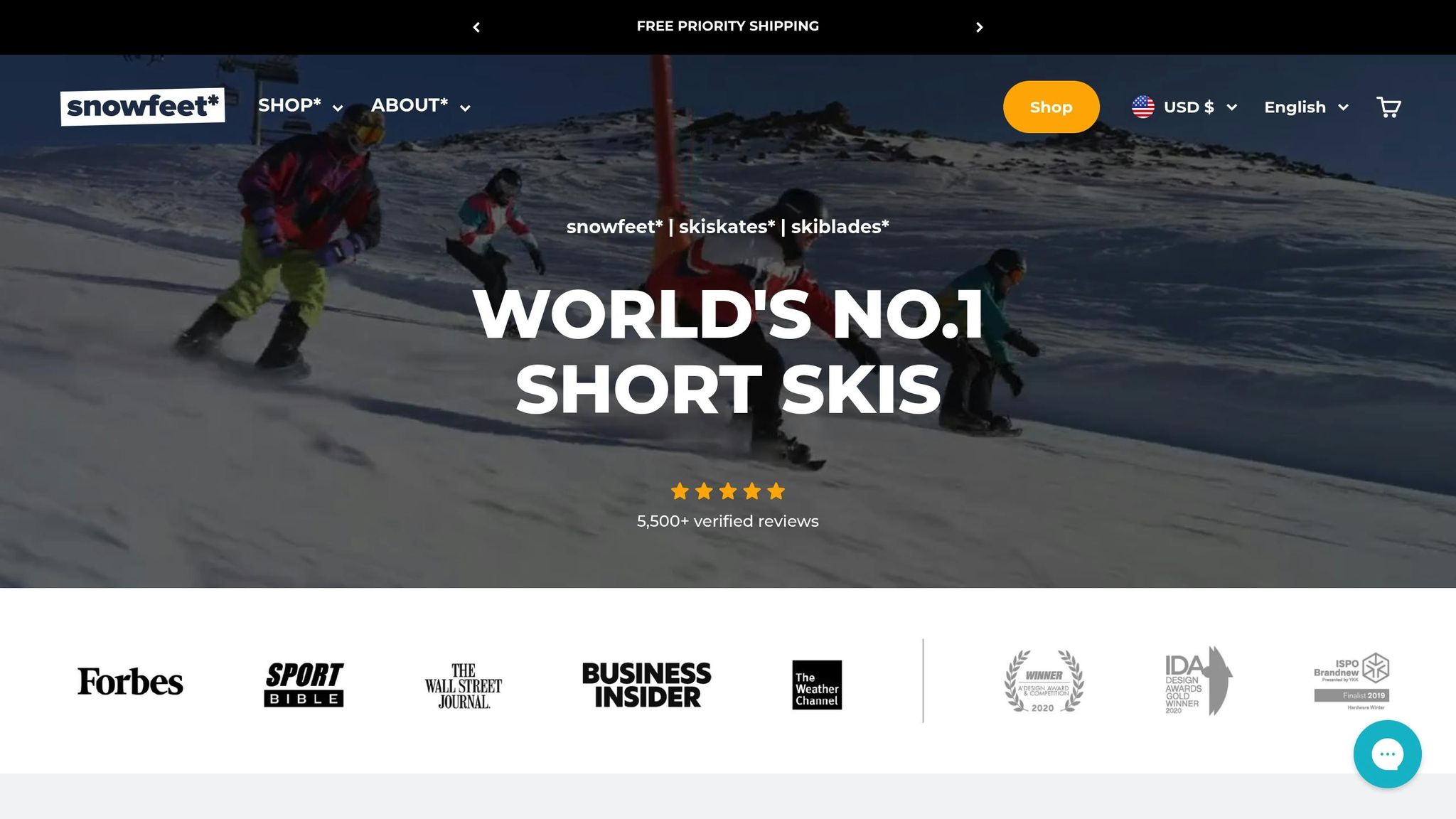
Pokud jde o zimní sporty, vybavení, které si vyberete, může rozhodnout o vašem zážitku. Tradiční nordické/XC vybavení a produkty Snowfeet* přistupují k velikosti, váze a pohodlí velmi odlišně – a tyto rozdíly mohou mít velký dopad na váš čas na sněhu.
Standardní nordické/XC vybavení
Tradiční nordické a běžecké (XC) lyžařské vybavení vyžaduje poměrně hodně výbavy. Lyže jsou dlouhé – obvykle mezi 6,5 a 8 stopami (asi 200–245 cm) – a jejich délka závisí na vaší výšce a stylu lyžování. Pak jsou tu boty, které jsou speciálně navrženy pro konkrétní vázání. Tyto boty samy mohou stát od 150 do 400 dolarů, což zvyšuje náklady.
Hole jsou další věc k zamyšlení. Pro klasické lyžování by měly dosahovat k podpaží, zatímco hole na skate lyžování jsou ještě delší, sahají asi do výšky brady. A kvůli délce lyží a holí je jejich přeprava často nutná pomocí nosiče na střeše nebo jiných specializovaných řešení.
Váha může být také problém. Kompletní výbava – lyže, boty a hole – obvykle váží mezi 12 a 15 libry. Spojte to s nepohodlným tvarem vybavení a dostat se s tím na tratě je samo o sobě výzvou.
Kromě toho tradiční nordické lyžování není zrovna přátelské pro začátečníky. Dlouhé lyže vyžadují přesné techniky a jejich zvládnutí může chvíli trvat. Pro nováčky může být křivka učení jako zdolávání strmého kopce – doslova i obrazně.
Produkty Snowfeet*: Změna hry
Snowfeet* mění pravidla hry tím, že se zaměřuje na jednoduchost a všestrannost. Jejich NORDIC běžecké skate lyže jsou dlouhé jen 35 palců (90 cm), což je mnohem snazší ovládat. A tady je ten trik: můžete je používat s běžnými zimními botami nebo snowboardovými botami. To znamená, že nemusíte utrácet stovky za specializovanou obuv.
Přenosnost je další oblast, kde Snowfeet* vyniká. Celá sestava váží méně než 4 libry a pohodlně se vejde do batohu. Rozlučte se s nosiči na střeše a starostmi o skladování.
Naučit se používat vybavení Snowfeet* je také hračka. Na rozdíl od tradičních nordických lyží, které mohou být pro začátečníky těžkopádné, jsou tyto kratší lyže navrženy pro rychlé a snadné zvládnutí. Už během první hodiny na sněhu můžete jistě klouzat a zatáčet – bez nekonečných tréninkových sezení.
Produkty Snowfeet* jsou také neuvěřitelně všestranné. Fungují stejně dobře na upravených tratích jako v terénu mimo stezky nebo dokonce na vašem místním sáňkařském kopci. Tradiční nordické vybavení vás obvykle drží na upravených cestách, ale Snowfeet* otevírá svět možností pro objevování všech druhů zasněžených krajin.
Porovnání vybavení vedle sebe
| Vlastnost | Tradiční nordické / běžecké vybavení | Produkty Snowfeet* |
|---|---|---|
| Délka | 6,5–8 stop (200–245 cm) | 35 palců (90 cm) |
| Hmotnost | 12–15 liber kompletní vybavení | Pod 4 libry |
| Kompatibilita bot | Specializované nordické boty (150–400 $) | Běžné zimní boty nebo snowboardové boty |
| Přenosnost | Vyžaduje střešní nosič / speciální přepravu | Vejde se do batohu |
| Cenové rozpětí | 400–800+ $ za kompletní vybavení | Začíná na 275 $ |
| Učební křivka | Strmé, technicky náročné | Rychlé zvládnutí, intuitivní |
| Flexibilita terénu | Převážně upravené stezky | Všechny terény - stezky, divočina, kopce |
| Úložný prostor | Vyžaduje značný prostor | Potřebuje minimální úložný prostor |
Srovnání je jasné. Vybavení Snowfeet* nabízí lehčí, cenově dostupnější a snadněji použitelné alternativy k tradičním sestavám. Je perfektní pro každého, kdo chce užívat zimní sporty bez starostí s objemným vybavením nebo strmou učební křivkou. Zatímco značky jako Rossignol, Salomon a Fischer si vybudovaly reputaci na dlouhých, specializovaných lyžích, Snowfeet* dokazuje, že kratší, přizpůsobivější vybavení je lépe přizpůsobené dnešnímu aktivnímu a pohyblivému životnímu stylu. Ať už vyrážíte na stezky nebo objevujete nedotčený sníh v divočině, Snowfeet* vám usnadní vyrazit ven a užít si zábavu.
Proč Snowfeet* překonává standardní značky lyží a snowboardů
Tradiční značky zimních sportů jako Rossignol, K2, Burton a Salomon si vybudovaly reputaci na specializovaném vybavení přizpůsobeném konkrétním podmínkám. Snowfeet* však zvolilo jiný přístup a nabízí jednoduché, všestranné vybavení, které je ideální pro širokou škálu zimních sportovců.
Co dělá vybavení Snowfeet* výjimečným?
Není potřeba drahých bot
Zapomeňte na utrácení za speciální lyžařské nebo snowboardové boty. Vybavení Snowfeet* funguje bez problémů s vašimi zimními nebo snowboardovými botami, které už vlastníte, což vám ušetří peníze i starosti.
Super přenosné
Na rozdíl od tradičních lyží a snowboardů, které jsou objemné a těžko přenosné, je vybavení Snowfeet* navrženo pro snadnou přenosnost. Můžete ho sbalit do batohu, hodit do kufru auta nebo vzít s sebou do letadla či vlaku – bez nutnosti speciálních opatření.
Připraven kdykoliv a kdekoliv
Snowfeet* se vymyká běžným hranicím lyžařských středisek. Ať už je to váš místní park, zahrada nebo jakékoliv zasněžené místo poblíž, můžete si užívat zimní sporty bez starostí o skipasy nebo dlouhé cesty.
Zvládá všechny druhy terénu
Od zhutněného sněhu a prašanu po kopce a rovné úseky, vybavení Snowfeet* je navrženo tak, aby zvládlo různé sněhové podmínky. Je vyrobeno pro flexibilitu, takže nejste omezeni jen na jeden typ prostředí.
A ten kompaktní design? Nejenže usnadňuje život - skutečně zvyšuje výkon.
Proč jsou kratší lyže průlomem
Snowfeet* mění pravidla tradičního designu lyží tím, že dokazuje, že kratší lyže mohou nabídnout lepší zážitek, zejména pro rekreační uživatele.
Snadnější ovládání
Krátké lyže jsou přirozeně obratnější, což usnadňuje zatáčení, zastavování a manévrování v úzkých prostorech. Se Snowfeet* budete mít větší kontrolu, ať už se proplétáte mezi stromy, nebo rychle upravujete směr za chůze.
Přátelské pro začátečníky
Dlouhé lyže mohou být pro začátečníky zastrašující. Menší velikost výbavy Snowfeet* ji činí přívětivou a přístupnou, pomáhá nováčkům získat sebevědomí bez pocitu zahlcení.
Lehké a šetrné k tělu
Objemné vybavení může být únavné na manipulaci, ale Snowfeet* drží věci lehké. Jeho design snižuje fyzickou zátěž, díky čemuž jsou zimní sporty přístupné lidem všech věkových kategorií a úrovní kondice.
Snowfeet* není jen vybavení - je to nový způsob, jak si užít sníh, ať už jste zkušený nadšenec, nebo začátečník.
Závěr: Výběr správného zimního sportovního vybavení
Při výběru zimního sportovního vybavení jde především o to, co vám nejlépe vyhovuje. Vědět, že běžecké lyžování (XC lyžování) je součástí širší rodiny nordických lyžařských disciplín, vám může pomoci zaměřit se na správné vybavení.
Pokud inklinujete k tradičnímu vybavení od značek jako Rossignol nebo Salomon, připravte se na větší investici. Tyto sestavy - lyže, boty, hole a vázání - jsou navrženy pro upravené tratě a mají vyšší cenovku. Navíc mohou být objemné na přepravu a skladování.
Na druhou stranu Snowfeet* nabízí lehkou, všestrannou možnost v cenovém rozmezí od 250 do 775 dolarů. Tyto kompaktní skiskaty fungují s vašimi běžnými zimními botami, což je nesmírně pohodlné. Ať už kloužete parkem, na své zahradě nebo vyrážíte na turistickou stezku, Snowfeet* vám dává svobodu lyžovat bez nutnosti být vázán na upravené tratě. Jsou o obratnosti, snadném použití a přenosnosti.
Takže pokud jste zaměřeni na zvládnutí klasických nordických technik a nevadí vám vyšší cena, tradiční vybavení pro XC je ta správná volba. Ale pokud preferujete něco cenově dostupného, snadno přenosného a zapadajícího do vašeho každodenního životního stylu, Snowfeet* může být právě pro vás ideální. Je to lyžování, zjednodušené.
Často kladené otázky
Čím se výbava Snowfeet liší od tradičního vybavení pro běžecké lyžování?
Výbava Snowfeet vyniká svou lehkostí, kompaktností a super snadným použitím. Zapomeňte na starosti s tradičním vybavením pro běžecké lyžování, které vyžaduje speciální lyže, boty, vázání a hole. Se Snowfeet je stačí připnout na vaše běžné zimní boty - žádné další vybavení není potřeba. To znamená méně objemu a více pohodlí, ať už míříte na sjezdovky, nebo jen objevujete zasněžené stezky.
Tato chytrá alternativa nabízí jednoduchý, ale účinný způsob, jak si užít nordické lyžování bez obvyklých komplikací. Pokud hledáte praktičnost s pevnými výkony, Snowfeet představuje dokonalou rovnováhu.
Jaký je rozdíl mezi běžeckým a nordickým lyžováním a jak regionální pohledy ovlivňují tyto sporty?
Výrazy běžecké lyžování a nordické lyžování se často používají, jako by znamenaly totéž, ale ve skutečnosti se trochu liší. Běžecké lyžování je jen jednou částí nordického lyžování, které zahrnuje jakýkoli styl, kde pata není pevně připevněna k lyži. Patří sem běžecké lyžování, skoky na lyžích a telemark - všechny spadají pod nordický pojem.
To, jak se tyto sporty provozují, často závisí na tom, kde se nacházíte. V nordických zemích jako Norsko a Švédsko je lyžování víc než jen sport - je to tradice. Jde o vytrvalost a užívání si přírody. Na druhou stranu ve Spojených státech je lyžování spíše rekreací, zaměřenou na kondici a zábavu venku. Tento kulturní rozdíl se odráží i ve vybavení, které lidé používají. Nordické země obvykle zůstávají u tradičnějších sestav, zatímco v USA roste zájem o moderní, přenosné možnosti jako Snowfeet. Výbava Snowfeet je kompaktní a všestranná, což z ní dělá skvělou volbu pro začátečníky nebo kohokoli, kdo chce zažít nordické lyžování bez tahání těžkého vybavení.
Proč bych měl zvolit Snowfeet místo tradičního nordického nebo běžeckého lyžařského vybavení?
Snowfeet přináší nový přístup k zimní sportovní výbavě a nabízí zábavnou a kompaktní alternativu k tradičním nordickým nebo běžeckým lyžím. Jejich lehký a přenosný design znamená, že je můžete hodit do batohu bez námahy. Ještě lepší je, že fungují s vašimi běžnými zimními botami - není třeba utrácet za drahou specializovanou obuv. To z nich dělá skvělou volbu pro každého, ať už začínáte, nebo prostě hledáte cenově dostupnější variantu.
Co odlišuje Snowfeet, je jejich kratší délka, která vám poskytuje lepší kontrolu a rovnováhu ve srovnání s dlouhými lyžemi. Díky tomu jsou snazší - a bezpečnější - na používání, zejména pro začátečníky. Vyrobené z odolného materiálu vyztuženého skelnými vlákny, jsou navrženy tak, aby zvládly spoustu akce a zároveň byly snadno přenosné. Ať už zkoušíte lyžování poprvé, nebo jen chcete jednoduchý způsob, jak si užít zasněžené dny, Snowfeet nabízí chytrou a vzrušující volbu pro zimní zábavu.
Související blogové příspěvky
- Altai Hok lyže vs. běžecké lyžování: Které přístupové lyže jsou nejlepší?
- Jak vybrat správné běžecké lyže podle vašeho stylu a terénu (Classic vs. Skate)
- Skating vs. Classic: Která technika běžeckého lyžování je pro vás ta pravá?
- Nordic lyžování vs. Ski Touring: Jaký je rozdíl a který byste měli vyzkoušet?







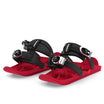
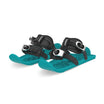












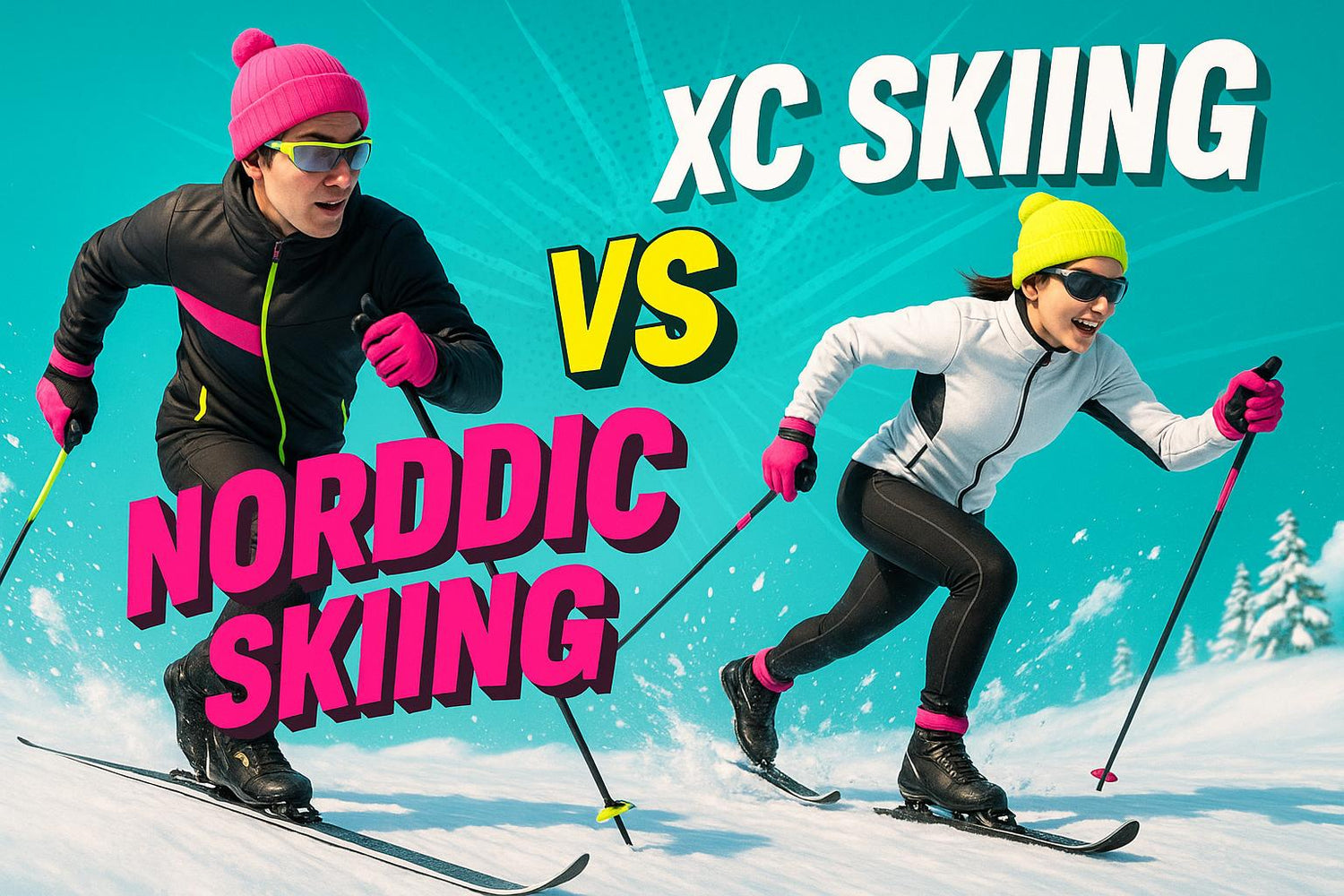
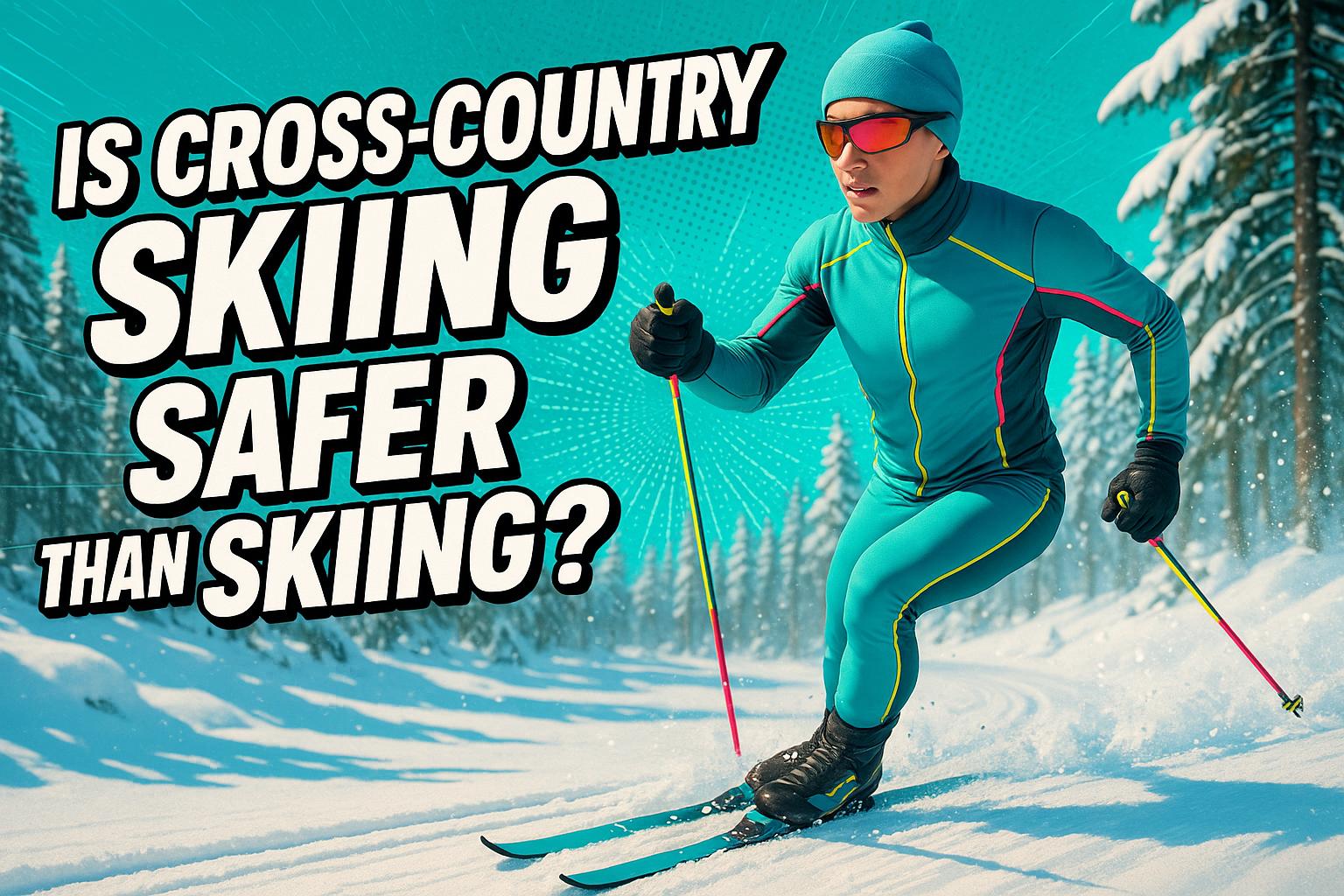
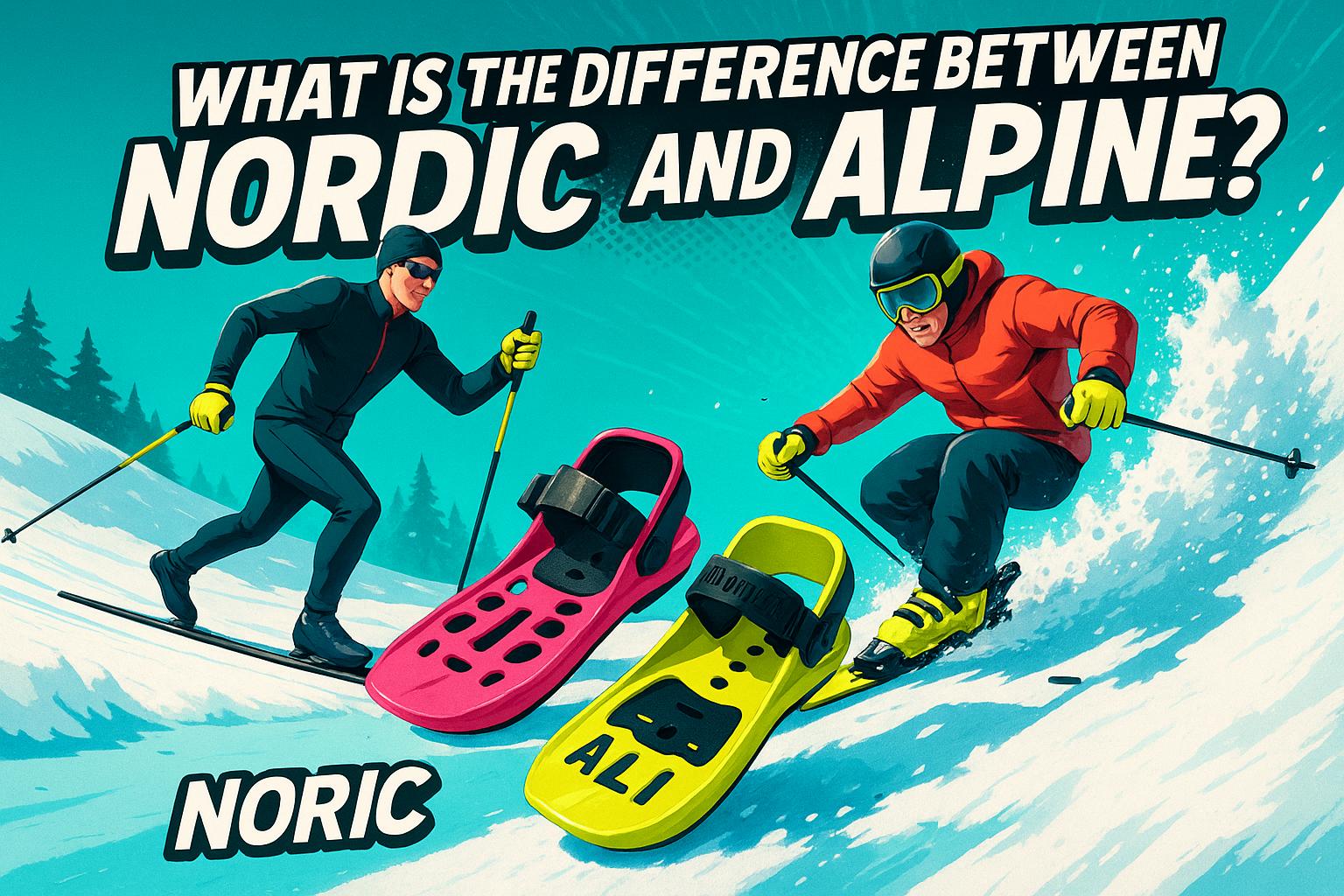




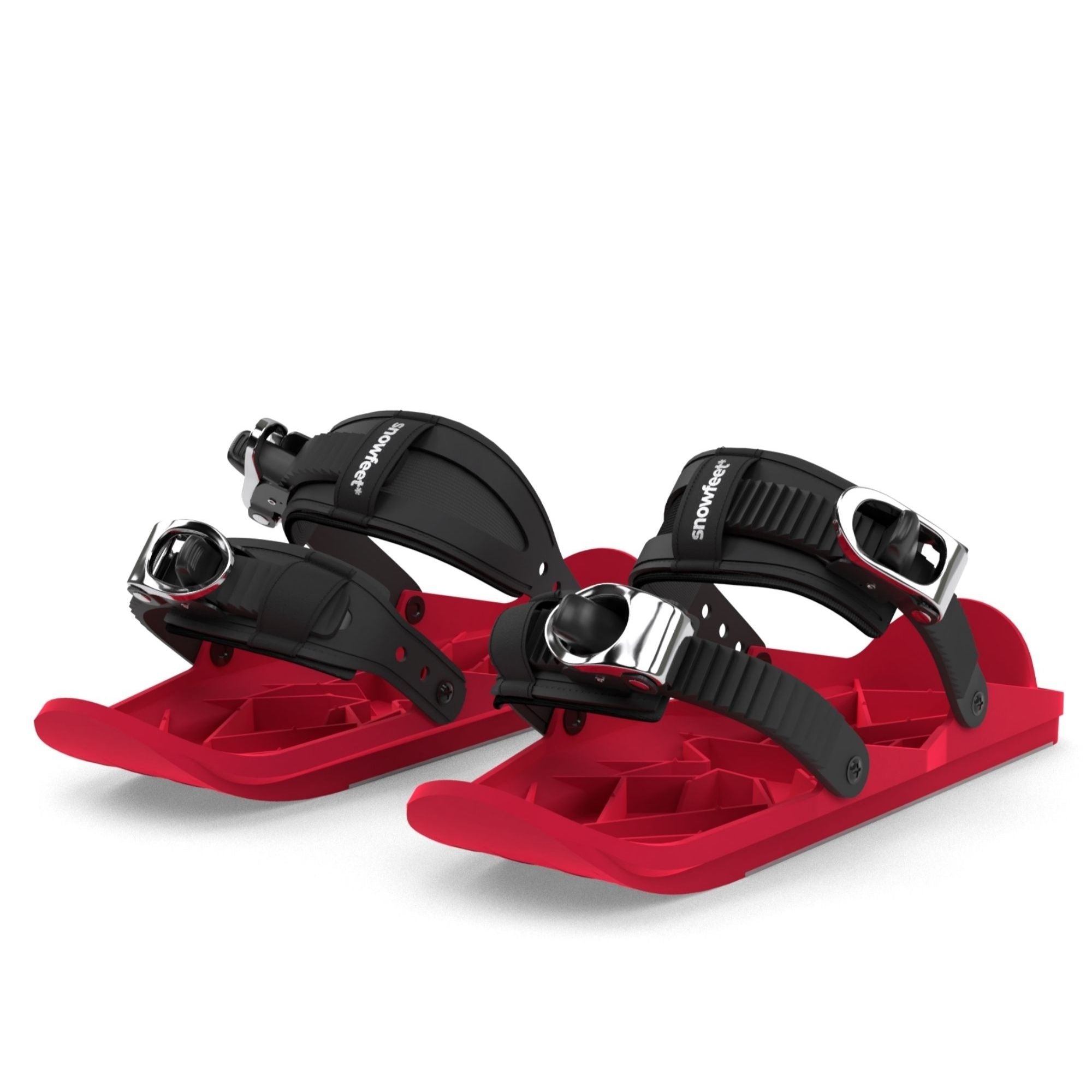
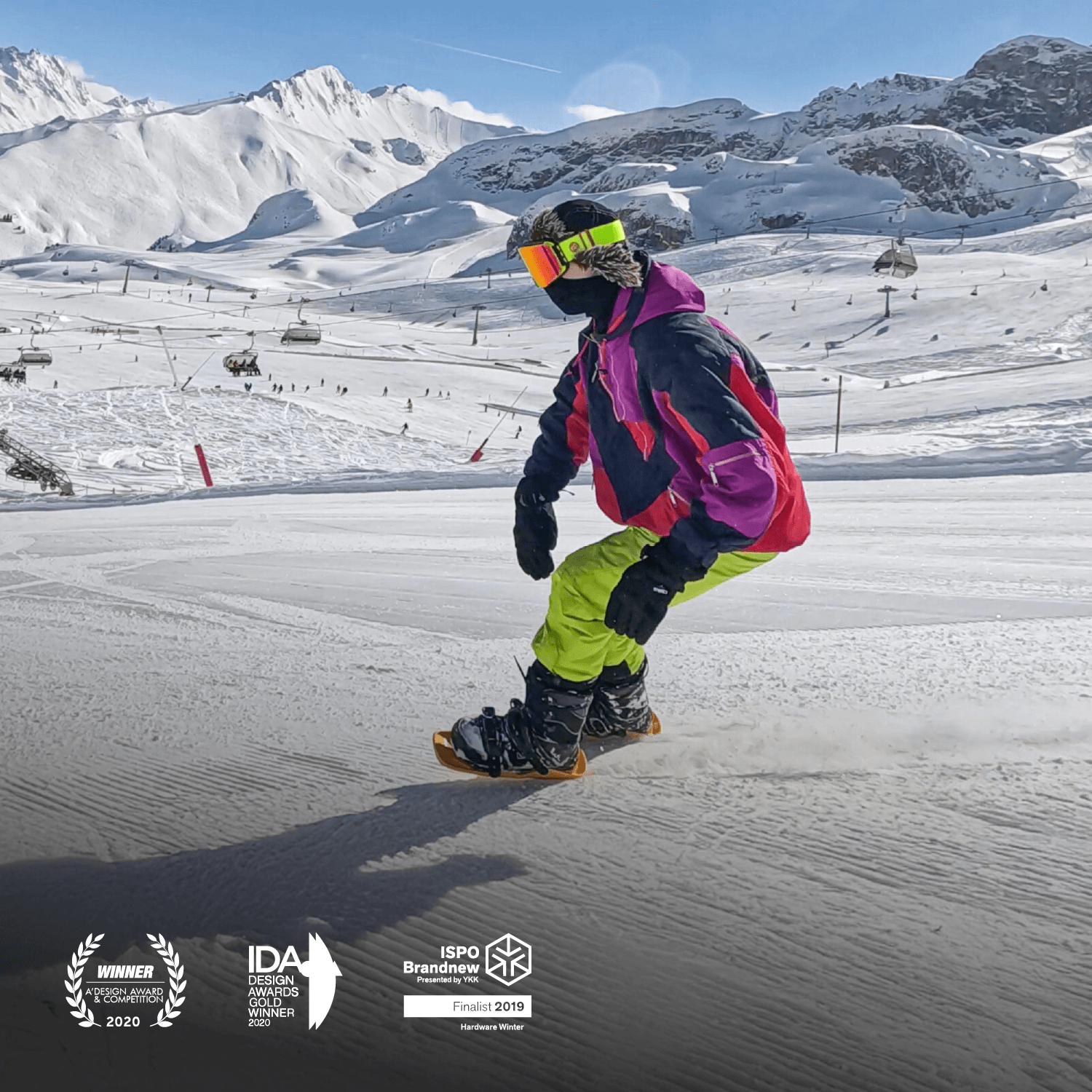




Zanechte komentář
Tento web je chráněn službou hCaptcha a vztahují se na něj Zásady ochrany osobních údajů a Podmínky služby společnosti hCaptcha.